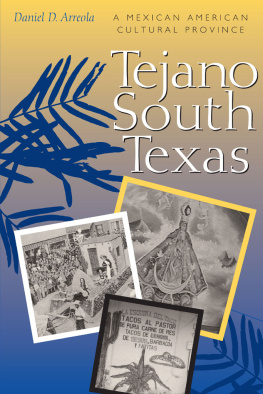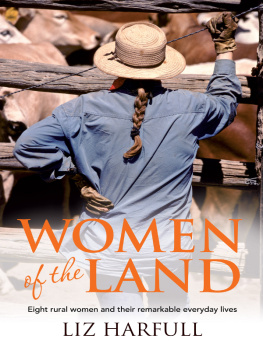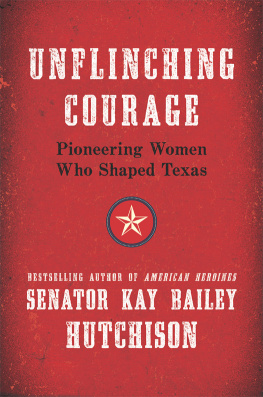Maps, Illustrations, and Tables
Maps
Map 1. Major physical features of the Blackland Prairie of Texas
Map 2. Counties of the Blackland Prairie of Texas
Map 3. Moves of the Rice family, Hunt County, Texas
Illustrations
Spring plowing, Williamson County
Mother and children at a cotton wagon, Kaufman County
Board and batten tenant farmers house, Ellis County
Landowners daughter weighing cotton, Kaufman County
African American church on the open prairie, Ellis County
Tables
Table 1. Number of Tenants and Landowners in Four Blacklands Counties, 19001940
Table 2. Average Age of Farmers Wives at First Marriage in Four Blacklands Counties, by Ethnic Group, 1900 and 1910
Table 3. Average Number of Births and Surviving Children Born to Farmers Wives under Age Forty-Five in Four Blacklands Counties, by Ethnic Group, 1900 and 1910
Table 4. Months of Field Work Women Performed Per Year, by Ethnic Group
Table 6. Literacy Rates for Women under Age Forty-Five in Four Blacklands Counties, by Ethnic Group, 1900 and 1910
Table 7. Change in Numbers of Tenants and Farm Owners in Four Blacklands Counties, 1930 and 1940
Table 8. Population Growth of Towns in Four Blacklands Counties, 19001940
Table 9. Population Growth of Major Blacklands Cities, 19001940
Preface: Womens Memories, Womens Stories
When everything else has gone from my brainthe Presidents name, the state capitals, the neighborhoods where I lived, and then my own name and what it was on earth I sought, and then at length the faces of my friends, and finally the faces of my familywhen all this has dissolved, what will be left, I believe, is topology: the dreaming memory of land as it lay this way and that.
Annie Dillard, An American Childhood
As Bernice Bostick Weir stands on the front porch of her white-painted bungalow in McLennan County, Texas, she gazes northwest to the Stampede Valley. The rolling prairie stretches before her, only a few houses and trees marking the grazing lands between her home and the distant horizon delineated by the passing freight cars of the Santa Fe Railroad. Recalling her arrival in that place as a bride in 1919, she remembers the landscape differently: When Pat and I married, fifty acres was a family plot. The Briscoes lived over here and they had six children; the Johnsons lived over there, and the Watsons lived right down here. And the Newmans lived over there, and Newmans lived up here. Weirs memories are configured by her relationships with other people, as her marriage, the births of her children, and the deaths of loved ones provide the structure upon which her recollections hang.
For others, the landscape has become less distinct with the passage of time. The Blackwell sisters, Louise and Deenie, drove through northeast Navarro County looking for their childhood homes. They wrote, We were able to identify some of the hedgerows, bridges, and other landmarks, to pinpoint where the small farms had been; but only one house of some six or seven of our childhood memories remained. It stood in isolation about a mile from the public dirt road we travelled on, and was obviously being used as a hay barn. Gone were all the houses, gardens, school houses, churches, fruit trees, pecan trees, and berry patchesall levelled to make room for Coastal Bermuda grass for the Hereford cattle which now dot the entire landscape. For the Blackwells, children of sharecroppers, all of the physical manifestations of their culture are gone. The prairie cotton farms of their childhood remain in their memory, however, as lively, vital places, where their father farmed other peoples land and their mother kept careful watch over her nine children.
This is a book of memories turned to stories, from women such as Bernice Weir, Louise Blackwell Dillow, and Deenie Blackwell Carver, who lived on cotton farms on the Texas prairie before 1940. The concept of the family plotan expanse of soil subdivided to meet the needs and test the resources of an individual family unitneatly encapsulates the two defining aspects of womens lives of the Texas Blackland Prairie: farming and family. The use of stories is highly appropriate for reconstructing the world of these women, for, as Bettina Aptheker has observed, women order their experiences in part through personal narratives: Stories are one of the ways in which women give meaning to the things that happen in a lifetime, and the dailiness of life also structures the telling, the ordering of thought, the significance allocated to different pieces of the story.
In this particular work, all of the stories are public. I found no collections of personal letters or diaries to reconstruct womens internal lives. Nor have I discovered any contemporary writing by women about themselves except the letters written for publication in regional agricultural newspapers. The three chief types of sources for this study, autobiographies and written memoirs,
The most extemporaneous of the three types of sources are the written autobiographies or memoirs that people of the Blackland Prairie generated to tell their stories. Historically minded older residents have set down their recollections, primarily to instruct younger generations on how life used to be. These memoirists were a self-selected group, well aware of their own historicity, who had time to write and most of whom possessed the financial means to have their memoirs printed for their families and friends. The volumes have found their way into libraries haphazardly. The memoirs cited here were generated by men and women in almost equal numbers, but they total less than a dozen: a tiny percentage of the millions of Texans who lived on cotton farms before 1940. Only one of the writers, Eddie Stimpson, is black.
The few rural women who have chosen to write their memoirs appear to have transcended the alleged female difficulty of claiming the authority of individual personal experience, asserting unique knowledge of that unique subject, the self and making their autobiography the dynamic process of recorded choice.




